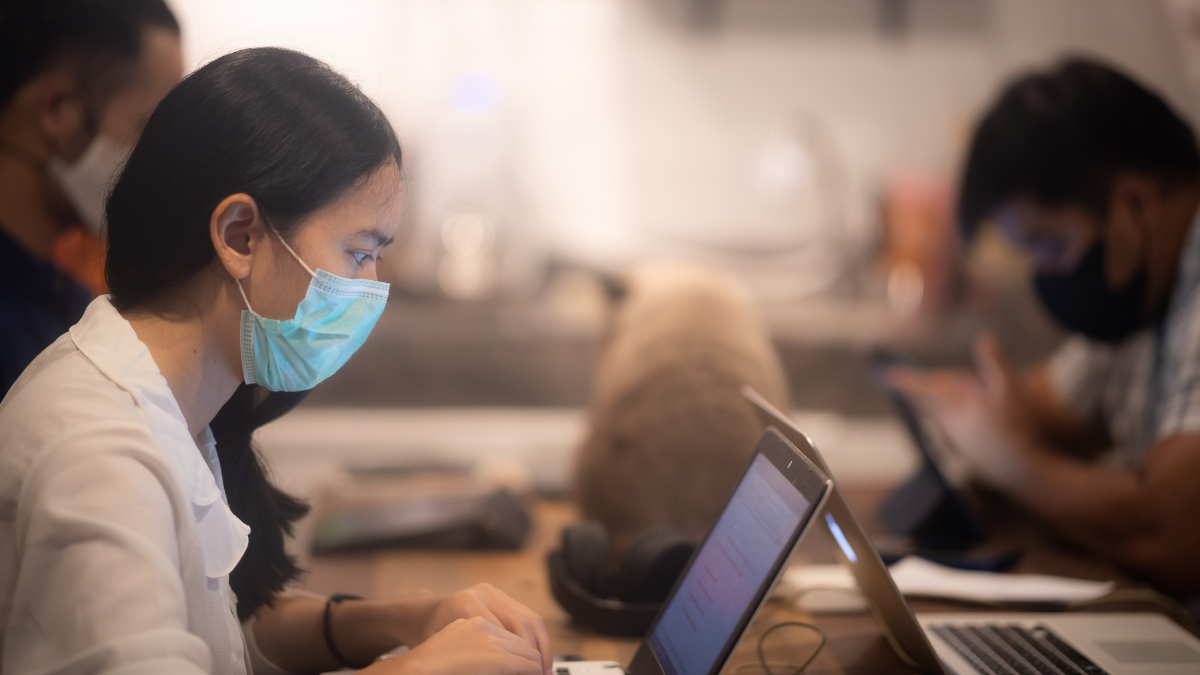
This op-ed was written by Sonia Jorge, Executive Director of the Alliance for Affordable Internet (A4AI), and was originally published by Thomson Reuters Foundation.
2020 has been the year of digital salvation and of digital deprivation. Just as the world has turned to the internet to work from home, keep businesses alive, go to school online and stay connected with loved ones, around 3.5 billion people — almost half the world — remain without internet access.
Covid-19 has shown the internet is not a luxury but a lifeline, and underscored why affordable, meaningful internet access must be a basic human right.
We should not have a world where a lack of internet access prevents children from learning when schools are closed. Or where students have to sit on the roofs of their parents’ home because it’s the only place they can get a mobile signal. Or where deep digital inequalities undermine efforts to contain the spread of the virus.
The pandemic gives us a historical opportunity to tackle multiple digital inequalities — cutting across gender, geography, wealth and the rural/urban divide — and to make universal internet access a reality.
The most pressing challenge is bringing down the cost to connect. While 85% of the world is now within range of a mobile network, the cost of data remains too expensive for many.
Our latest Affordability Report finds that over 1 billion people live in countries that don’t meet the UN’s ‘1 for 2’ affordability threshold for mobile data — 1GB for less than 2% of average monthly income. And in today’s world, even 1GB is no longer sufficient for people to use the internet in a meaningful way.
Covid-19 has shown the internet is not a luxury but a lifeline, and underscored why affordable, meaningful internet access must be a basic human right.
As leaders reassess their priorities in response to this pandemic, they must prioritise broadband as an urgent priority. They have at least two things on their side to bring down costs.
First, the solutions are quite clear. This challenge does not require us to break new ground. It’s not like creating a vaccine. To make the internet affordable and accessible to all, we need increased investment, good policy and sustained political commitment.
Second, we’re already moving in the right direction. Since our first report in 2015, we’ve seen the cost of 1GB data drop by more than half in the countries we study. And the biggest drops have occurred in the places where the fewest people are online. Across Africa, prices have fallen by 60%, faster than in any other region.
Yet still, the cost of 1GB data in Africa remains double the affordability threshold at over 4% of average income. And in the least affordable countries, the average person must spend over a fifth of their income for a basic 1GB package. For those earning less than average incomes, the cost is yet further out of reach.
To accelerate progress and get everyone an affordable, quality broadband connection, will take an additional $428 billion over the next ten years. While this price tag may sound high, the world spends the same amount on soda each year. Over 10 years, with funding coming from governments, development agencies and the private sector, this figure is not only achievable, but an excellent investment.
However, investments alone are not enough. We also need good government policy to ensure investment is used well. Effective national broadband plans are critical to steer a country’s broadband development and bring down costs.
To make sure the world and everyone in it can be prepared for the challenges that lie ahead, we need affordable, meaningful internet for all. Governments must lead the way.
These plans make public spending more effective, encourage private sector investment, and provide greater accountability for broadband development. While most of the countries we studied have some kind of plan, the quality of these varies widely — from comprehensive strategies with clear targets and implementation targets, to a scattering of documents that add up to very little.
It’s clear the difference that effective plans can make. Take Rwanda, a landlocked, low-income country that has seen tremendous turmoil in past decades. Overcoming great challenges, the country has brought down the cost of 1GB data to a fifth of the 2015 cost, from 20% to just 3.5% of average income.
By investing in its national broadband plan and good policies, Rwanda has outpaced its East African neighbours and become the top-performing low-income country in our Affordability Drivers Index, which measures policy progress.
Meanwhile, other governments, such as South Africa and Brazil — which are well placed to be digital leaders — have become laggards by failing to invest in effective policies and planning. The cost of data in Brazil is higher than in neighbouring Argentina, Peru and Colombia. And in South Africa, costs have fallen by just 12% over 5 years, far more slowly than in Africa as a whole.
We need all governments to adopt effective broadband plans to bring down costs faster and make connectivity affordable for everyone. To do this well, they must consult widely across sectors and have an inclusive drafting process. Their plans must set clear targets with time-bound measurements that address their most urgent digital gaps. And critically they commit to funding the implementation of their plan.
This pandemic has accelerated the world’s quick march towards digitalisation. Those who are left out will suffer ever greater consequences. To make sure the world and everyone in it can be prepared for the challenges that lie ahead, we need affordable, meaningful internet for all. Governments must lead the way.
For more updates on our work, follow us on Twitter at @a4a_internet and sign up to our newsletter.
Leave a Reply
